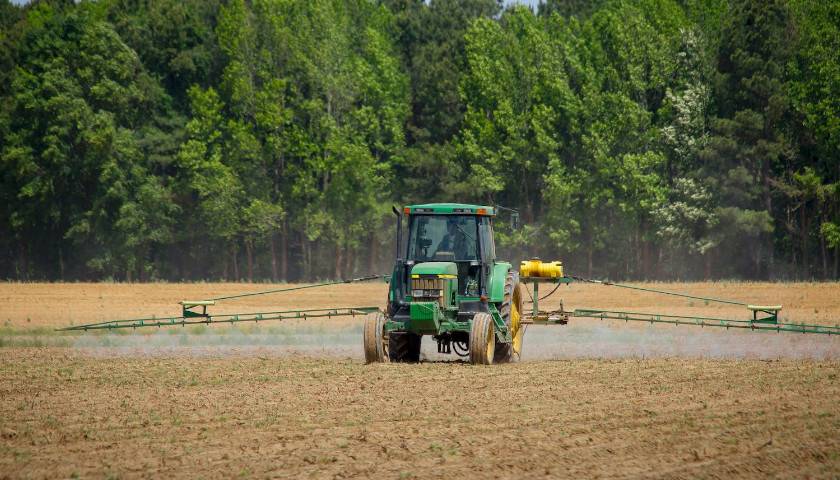by Steve Gillman
From ancient Egypt to medieval England, cultivating one or more crops in the same field was common practice among many farmers for thousands of years. However, in the last century, food producers largely stopped ‘intercropping’ and moved towards an industrial type of agriculture – a shift that contributed to 34% of the world’s farmland being degraded today.
“Interest is growing in intercropping [again] because farmers increasingly understand it improves their soil health,” said Jerry Allford, an organic farmer and advisor from the Soil Association, a UK charity promoting sustainable agriculture. Jerry thinks this renewed focus can “open up a whole new way of farming” because it can bridge profitability with regenerative agriculture practices.
“In the case of growing a legume and cereal together, we know there is nutrient transfer between the two crops,” he said, adding that this reduces the need for synthetic fertilisers and its associated costs. Other potential benefits include reduced weeds, pests and diseases as well as higher resistance to extreme weather from climate change – all of which can improve farmers’ bottom line.
To understand and amplify the potential of intercropping, Jerry is running a range of trials where farmers grow a mix of crops on the same stretch of land. This is part of an EU project called LEGUMINOSE which is researching the benefits of intercropping in eight European countries, as well as in Egypt and Pakistan. In total, there will be 180 ‘living labs’ where farmers in monoculture systems introduce a strip of intercropped cereals and legumes, such as wheat and peas or barley and broad beans.
Each living lab will be tailored to its region with the farmer choosing the techniques and crops most relevant to their area, such as drilling depth, seed mix and planting methods. The idea is that this will enable food producers to produce more practical results, something which LEGUMINOSE wants to use to attract others to intercropping.
One of the UK’s living labs recently finished and Jerry says it has already provided an insight into intercropping’s promise. The test farm planted wheat and beans, reporting a 27% increase in the intercropped plot compared to the monoculture strips on the same farm. Less weeds were also reported while a preliminary analysis of the soil showed less plant disease present between the two, meaning less need to buy and use agricultural chemicals.
The economic potential of intercropping does not stop there either. Farmers can choose to grow a secondary crop for the market, such as a legume for human and animal consumption, or a plant that can enhance the quality of a primary crop.
“We’re also finding that intercropped wheat is meeting UK milling specifications easier, so it could produce a premium price for the farmer,” Jerry said, adding that he hopes this drives an uptake of intercropping and the practice becomes mainstream in the agriculture sector.
Models for scale
In Europe, only 2% of farmers currently use a legume-cereal intercrop. Shamina Imran Pathan, LEGUMINOSE’s project coordinator, says it will not be easy to make the practice go mainstream, but providing farmers with the right information and tool can help them switch quicker from a monocultural farming system to a more regenerative one.
“Many farmers still don’t know what intercropping is,” Pathan points out. “That’s why we need to involve more and more farmers to increase their knowledge about mixing crops together.”
The living labs are designed to galvanise discussions among farmers and boost uptake that way, but LEGUMINOSE will also reinforce this knowledge through seven additional research fields that explore the benefits of intercropping in precise detail. Academics from several European universities will collect soil samples from farms and conduct a range of physical, chemical and biological analyses to explore the benefits of intercropping on a range of aspect, such as those around soil health, pesticide reduction and crop quality.
Early results have also shown promise here too with one trial finding that wheat intercropped with clover completely removed the presence of a parasitic weed called dodder – a benefit that could reduce the need to use herbicide and help farmers’ cut down on their input costs.
Pathan explains this data will be combined with the regional information from the living labs to create forecasting models based on artificial intelligence. This will be made available to farmers as a web-based tool in the coming years that they can use to select the optimal intercrop combinations for their specific situation.
“Farmers can use this to input criteria like their soil type and climate, and the tool will then tell them what combination of crops could work for them,” Pathan said.
– – –
Steve Gillman is a writer for RealClearScience.




